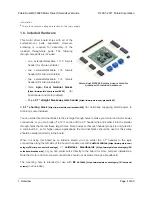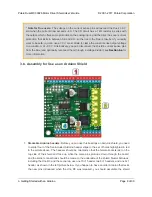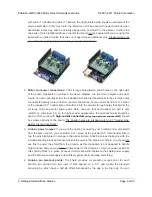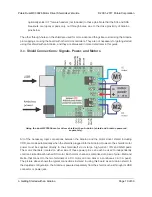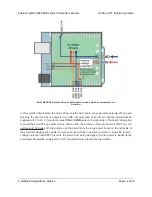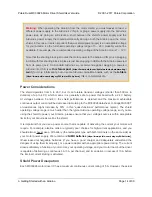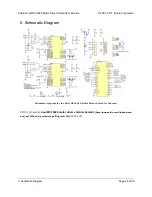
This example ramps motor 1 speed from zero to max speed forward, to max speed reverse, and back
to zero again over a period of about 3 s, while checking for motor faults and periodically printing the
motor current to the serial monitor. It then performs the same process on motor 2 before repeating all
over again.
Note:
Even if you do not have any motors yet, you can still try out this sketch and use
the motor indicator LEDs for feedback that the shield is working properly.
64
65
66
67
68
69
70
71
72
73
74
75
76
77
78
79
80
81
82
83
84
85
86
87
88
89
90
91
92
93
94
{
Serial.print(
"M2 current: "
);
Serial.println(md.getM2CurrentMilliamps());
}
delay(2);
}
for
(
int
i = 400; i >= -400; i--)
{
md.setM2Speed(i);
stopIfFault();
if
(
abs
(i)%200 == 100)
{
Serial.print(
"M2 current: "
);
Serial.println(md.getM2CurrentMilliamps());
}
delay(2);
}
for
(
int
i = -400; i <= 0; i++)
{
md.setM2Speed(i);
stopIfFault();
if
(
abs
(i)%200 == 100)
{
Serial.print(
"M2 current: "
);
Serial.println(md.getM2CurrentMilliamps());
}
delay(2);
}
}
Pololu Dual MC33926 Motor Driver Shield User’s Guide
© 2001–2017 Pololu Corporation
3. Getting Started with an Arduino
Page 18 of 30

